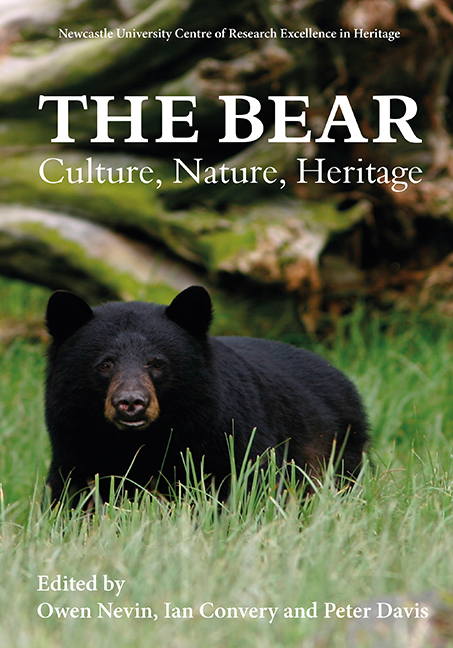Book contents
- Frontmatter
- Contents
- List of Illustrations
- Acknowledgments
- List of Abbreviations
- Foreword: The Bear: A Cultural and Natural Heritage
- Introduction: What is a Bear?
- Bear-People Interactions
- Bears in the Public Gaze
- Bear Biology, Management and Conservation
- Afterword: “It's Me Bear”: Reflections on a Unique Career Working with Bears
- List of Contributors
- Index
- Previous titles
8 - Bears Behind Bars: Captive Bears Throughout History
Published online by Cambridge University Press: 21 March 2020
- Frontmatter
- Contents
- List of Illustrations
- Acknowledgments
- List of Abbreviations
- Foreword: The Bear: A Cultural and Natural Heritage
- Introduction: What is a Bear?
- Bear-People Interactions
- Bears in the Public Gaze
- Bear Biology, Management and Conservation
- Afterword: “It's Me Bear”: Reflections on a Unique Career Working with Bears
- List of Contributors
- Index
- Previous titles
Summary
Bears and humans have co-existed for thousands of years. All eight species of bear have occupied a particular niche in human culture and development, from prehistoric times through to the World Wildlife Fund (WWF) adoption of the panda bear as the organisation's logo. The most ‘exotic species’ of bear (such as sloth bear and the polar bear) have sparked the interest of animal collectors since at least 2500 BCE. Ever since that time, bears have featured in private animal collections, and with the rise of the modern (public) zoo in the 18th century, exhibited for human entertainment in zoological gardens, museums, circuses, street theatre, cafes, film and TV. They have danced, walked the tightrope, dressed up as children, and played the part of human friend (eg Grizzly Adams) and adversary (eg The Revenant), all in the name of entertaining humans. They have also played a role in traditional medicines, particularly in the East where for hundreds of years bear bile has been used for a range of curative properties.
As a result, captive bears are found all over the world, even in the most remote places. Unfortunately, many captive bears are still housed in small barren ‘crush cages’, deprived of even the most basic needs and care such as water, proper food and shelter. Globally, various species of bear are privately owned (often illegally); they are kept in backyards, next to petrol stations or roadside restaurants, or on public display at a beach or café to attract customers. Most of these bears will have health problems and display chronic behavioural problems associated with captivity. These bears are usually wild-caught as cubs, a practice that is a significant threat to the wild population in many regions. Other bears feature in circuses, typically performing by balancing on a rope during the show then spending the rest of the day confined in small circus trailers. We are perhaps most familiar with bears from visits to a zoo, where the quality of the enclosure varies from a cage barely larger than the bear to large naturalistic enclosures that resemble the bears’ wild habitat.
- Type
- Chapter
- Information
- The Bear: Culture, Nature, Heritage , pp. 93 - 106Publisher: Boydell & BrewerPrint publication year: 2019



